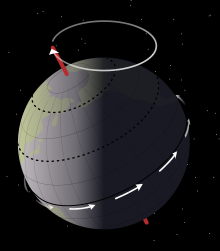Astrolonomical vs. Astrological
Astrologers today are working with a dating scheme that has been outdated for over two millenia–and which was never particularly accurate to begin with. The traditional dates for the positions of the Zodiac constellations are simply incorrect. But modern astrologers don’t actually observe the sky the way ancient astrologers did. They simply go by ancient charts based on the position of the Sun in the stars over 2000 years ago.
As the following table indicates, the traditional dates for the Sun’s position in the Zodiac are not only out of sync with the actual sky, but they are artificially separated into 30-degree segments to make each sign last an average of 30 days. As you can see in the right side of the table, the signs are anything but evenly distributed across the sky. You will also notice that there is in fact a thirteenth constellation–Ophiuchus–which is ignored by traditional Astrology.
TRADITIONAL
ASTROLOGICAL DATES |
ACTUAL ASTRONOMICAL DATES TODAY (c. 2000 C.E.) |
|||||
|---|---|---|---|---|---|---|
| Constellation | Date Span | Days | Constellation | Date Span | Days | |
| Aries | 21 Mar – 19 Apr | 30 | Aries | 19 Apr – 13 May | 25 | |
| Taurus | 20 Apr – 20 May | 31 | Taurus | 14 May – 19 Jun | 37 | |
| Gemini | 21 May – 20 Jun | 31 | Gemini | 20 Jun – 20 Jul | 31 | |
| Cancer | 21 Jun – 22 Jul | 32 | Cancer | 21 Jul – 9 Aug | 20 | |
| Leo | 23 Jul – 22 Aug | 31 | Leo | 10 Aug – 15 Sep | 37 | |
| Virgo | 23 Aug – 22 Sep | 31 | Virgo | 16 Sep – 30 Oct | 45 | |
| Libra | 23 Sep – 22 Oct | 30 | Libra | 31 Oct – 22 Nov | 23 | |
| Scorpio | 23 Oct – 21 Nov | 30 | Scorpius | 23 Nov – 29 Nov | 7 | |
| Ophiuchus | 30 Nov – 17 Dec | 18 | ||||
| Sagittarius | 22 Nov – 21 Dec | 30 | Sagittarius | 18 Dec – 18 Jan | 32 | |
| Capricorn | 22 Dec – 19 Jan | 29 | Capricornus | 19 Jan – 15 Feb | 28 | |
| Aquarius | 20 Jan – 18 Feb | 30 | Aquarius | 16 Feb – 3/11 | 24-25 | |
| Pisces | 19 Feb – 20 Mar | 30-31 | Pisces | 12 Mar – 18 Apr | 38 | |
For a graphical illustration of the sun’s different position in the sky, see this comparison of the Sun’s position over the last 4000 years.
For a more information and a fuller explanation, see What’s Your Sign?, by Philip Plait , an Astronomer at Goddard Space Flight Center, and The Real Constellations of the Zodiac, by Lee Shapiro, director of the Morehead Planetarium.
A Comparison of the Position of the Sun Over Time
The following images, produced with the Starry Night Astronomy application, display the position of the sun on January 1st at 500-year intervals.
The shift is caused by a phenomenon called the axial precession of the Earth. Simply put, the Earth is wobbling on its axis (just like a spinning top or gyroscope does as it’s slowing down) at a rate of roughly one wobble every 26,000 years.
This means that from the perspective of a person standing at the same place on the Earth, he sun will be in a slightly different location in the sky from one year to the next. You wouldn’t notice it one year at a time. But if we look at it every 500 years, we can see the change. (Incidentally, It also means that the north star is drifting as well. Stargazers of 4000 years ago probably would have called Kochab the north star, at that time it was closer to the North pole than Polaris.)
Notice that during the time in which the Greeks started using the individual’s birth date to determine personality and prediction (c. 250 BCE), and when Ptolemy wrote his works on Astrology, defining Western Astrology for future generation (c. 150 CE), someone born on 1 January would have indeed been a Capricorn. But today he or she would in fact be a Sagittarius.
1 January 2000 BCE
1 January 1500 BCE
1 January 1000 BCE
1 January 500 BCE
1 January 1 BCE
1 January 500 CE
1 January 1000 CE
1 January 1500 CE
1 January 2000 CEThe perceptive reader will notice that the leap from 1500 CE to 2000 CE is much larger than the rest. That is due to the fact that in the year 1582, when the Gregorian calendar replaced the outdated and incorrect Julian calendar, 10 days were dropped out of the month of October in order to correct the drift in the calendar caused by the fact that the Julian calendar did not include the 400-year leap years. In order to correct the situation, in 1582 the dates from 5 October to 14 October were skipped. Thus, in the Gregorian calendar (the one we use today) the day after 4 October 1582 is actually 15 October 1582. Compare the following images showing the position of the sun on 1 January from 1582 to 1 January 1583.
1 January 1582 CE
1 January 1583 CE













Leave a Reply
You must be logged in to post a comment.